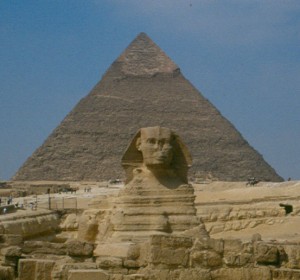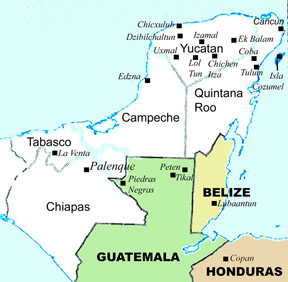Author Archives: Carol Chapman
Gorgeous Video: The Great God Pan
Is the Great God Pan a lascivious debaucher of maidens? Or, is he the Lord of the Wilderness?
What do you think? To watch the video, please scroll down to the actual video, which is larger than the picture of the video below.
Continue readingForgiveness matters! [Video]
We yearn for forgiveness: both for ourselves and also to be able to forgive those who have wronged us.
As you’ve probably found, if you don’t forgive those who have hurt you, you continue to suffer. The person no longer hurts you. Now, you hurt yourself.
Unbidden, you find the uncomfortable memories rearing up in your mind. In fact, you may dwell on the memories, complain about the person to others, and even plot revenge.
Meanwhile, the person who hurt you doesn’t even know. That person may even be dead!
Continue readingSerpent Mound with Egg
Did ancient indigenous people create the Ohio Serpent Mound with Egg in memory of Atlanteans traveling to North America?
In my past life memories of Atlantis, I looked like a glowing egg. In addition, I’d fallen into a serpent’s mouth and flew through the atmosphere to land at another location on earth. Therefore, I’m always interested in images created by ancient peoples in which a serpent has an egg in its mouth.
Continue readingEncounter with Pan
Have you ever had an Encounter with Pan? If so, I’d like to hear about it. Please describe your experience in the comments section below.
Interestingly, since my book When We Were Gods was published, I’ve heard from numerous people who have had an Encounter with Pan. Often he appears while a person is outdoors. Sometimes, they are gardening.
Continue readingMetal Eating Plants Clean the Earth
Metal eating plants can clean the earth–how exciting! You’ll find a wonderful video about heavy metal eating plants down below.
For me, this news about heavy metal eating plants is especially exciting. I received information from Pan, Lord of the Wilderness, while writing my book, When We Were Gods. He said that nature was capable of cleaning the earth. I included the information in the book, When We Were Gods. Here’s a quote from the book:
Continue reading“But remember, Pan has also said that nature can and wants to heal the earth.”
Safety in Yucatan Peninsula for Women
Twenty-one years living in Yucatan has given Kristine Ellingson a different opinion of safety in Yucatan Peninsula for women than the U.S. media leads us to believe. In this video excerpt of a interview with Kristine, she gives safety tips for women traveling alone in Yucatan.
Continue readingSafety in Yucatan Peninsula Compared with U.S.
Having lived in Yucatan for 21 years, Kristine Ellingson understands safety in Yucatan Peninsula compared with the U.S. In this video, she describes her Mayan husband Santiago’s experiences while guest lecturer at the University of North Carolina (UNC) in the United States. Then, she compares his experiences with the life they know in Yucatan. You’ll be surprised at her conclusions.
Continue readingSafety in Yucatan
One of the first questions people ask before they go to Yucatan is, “Is it safe to travel in Yucatan?” In this video, Yucatan resident Kristine Ellingson describes her experiences with safety in Yucatan. She includes what she calls, “Checkpoint Charlie,” the Yucatan Military Checkpoints, as well as rifle-toting Mayan farmers, and the general paranoia most Americans feel about safety in Yucatan.
Continue readingMayan Civilization’s Collapse: Deforestation
Does this sound familiar? Although this quote is excerpted from a Live Science article about the
ancient Mayan civilization in the rain forests of Guatemala, the reference to tree pollen being replaced by weed pollen sounds a lot like our present civilization.
I live in a rural area in the U.S., and everywhere around me, forests are being cut down to create subdivisions.
From pollen trapped in ancient layers of lake sediment, scientists have learned that around 1,200 years ago, just before the civilization’s collapse, tree pollen disappeared almost completely and was replaced by the pollen of weeds. In other words, the region became almost completely deforested.
Aren’t we cutting down trees and replacing them with cities, farms, and industrial regions? Don’t most of us live in areas where tree pollen hardly exists any more?
The above quote refers to the ancient Mayan civilization in the Peten region of Guatemala. According to a Live Science article, Ancient Mayan Canals Possibly Spotted in Satellite Images, NASA climate scientist Bob Ogelsby at the Marshall Space Flight Center, learned from computer simulations that:
Without trees, erosion would have worsened, carrying away fertile topsoil. The changing groundcover would have boosted the temperature of the region by as much as 6 degrees, . . .
The article goes on to say that the basic cause of the Mayan civilization’s collapse was because of ongoing food and water shortages brought on by a “combination of natural drought and deforestation by humans.” Could we be creating our own civilization’s collapse by deforesting our land? Can we learn from the ancient Maya?
From my point of view, the most important thing has to do with the disregard for our dependence on the nature kingdom.
Continue readingSecret Room in King Tut’s Tomb?
I’m always excited at the thought of Egyptologists finding secrets chambers in ancient Egyptian  monuments. Of course, for me, the biggest prize would be a secret room in or beside either the Great Pyramid or the Great Sphinx.
monuments. Of course, for me, the biggest prize would be a secret room in or beside either the Great Pyramid or the Great Sphinx.
Therefore, when I read that Egypt Antiquities Minister Mamdouh el-Damaty agrees with British Egyptologist Nicholas Reeve’s contention that a queen could be buried behind the wall in a secret room in King Tut’s tomb, I take note. My thought is that, if there’s possibly a secret room in King Tut’s tomb, according to the NBC news article Egypt Says King Tut’s Tomb May Have Hidden Chambers, there may also be hidden chambers in other ancient Egyptian monuments.
I’m especially excited because of my past life memories of people from Atlantis traveling to ancient Egypt. Due to these reincarnation memories being so vivid, I traveled to Egypt to see the ancient Egyptian antiquities I’d revisited in my previous incarnations. I wrote about my adventures discovering images in the pharaoh’s tombs that illustrated my past life memories in Arrival of the Gods in Egypt. Among many other unusual concepts I present in that book, I talk about a secret, undiscovered room under the 2nd Great Pyramid. This is not the famous Great Pyramid–but the pyramid that’s in the middle of the three great pyramids and is connected to the Sphinx by a causeway. It’s the pyramid in the photo behind the Sphinx in the photo above.
